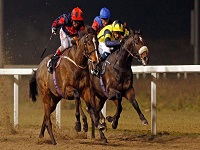One or two unusual stats/sequences for you to think about – DRAWS. These stats etc, refer to the match numbers on the weekly Football Pools Coupons. My source details the 49 matches weekly over a period of 40 weeks. Hence a total of 1960 matches covered at any one time. We are all aware how hard draws are to forecast. Many weeks each season, on the pools coupons nobody can find just eight of them. When you study form, it’s a wonder anyone ever does get eight all on one line.
Football results are well known for repeating themselves. Just check historic results between teams from any leagues and you’ll see there are occasions when a certain side will prove too much for their opponents even when their opponents are favoured by conditions and form. It happens almost weekly. So things repeating themselves can be useful for forecasting, even forecasting DRAWS.
From some time ago I remember a system known as Bells Draw System. Unfortunately I can’t remember it word for word but it was based upon previous draw results. If a match number drew on any Saturday it was considered for the next Saturday BAR ONE as a possible selection.
This system was in operation when all draws were 3 pointers on the treble chance pool. So in today’s world we need to look for both scoring and scoreless draws.
I’ve recently trundled my way thru’ 3 set of results, as mentioned above. I’ve separated score draws and the non-score draws purely to see if here is any great difference. There isn’t much difference although it does appear that there is a slight leaning against a certain timescale.
In each set of results I’ve checked as follows……..
Set 1. I looked first for consecutive( XX ) draws on each match number and then consecutive bar one.(X – X) draws on each number.. They both produced 84 occasions when they fitted their respective requirements. Still 168 possibilities out of 1960 doesn’t seem a very good outcome. In theory we could expect 548 (28% of all matches) of the 1960 matches to be draws. So we could have the possibility of finding 1 of every 3 draws. Still not very inviting.
Set 2. This batch returned 106 score draws and 103 no-score draws. A total of 209 draws from the overall total of 447 draws. The 447 draws for the period of 40 weeks is below the expected return of 28%. However the 209 draws from the total of 447 returns over 46 % of the returns.
Set 3. Here there were a grand total of 478 draws. Our way of choosing found 200 of them. Almost 42%. 478 out of 1960 matches is still below the expected return of 28% being a little short of 42%.
These three sets of stats were taken at different times over the year. As each set was below the expected return percentage for such a period it means there will be periods when the returns will be higher than the expected 28%.
As these stats are formed from using match numbers, they (match numbers) can also be used to show us which numbers are to be avoided. There is one period of 40 weeks when match number 40, recorded just TWO drawn games and another perion when match 48 did the same.
So it’s worth looking at these returns, even if it’s just to discard the unlikely draws and thus help reduce the large number of possibilities. One thng to remember is, these figures can change at an alarming rate. Any period starting late April , early May is apt to be a little short on both types of drawn matches.
However,if you do decide to leave out a specific match number DON’T do so if it’s just had a successful result the previous week. That would be tempting fate too much.
A run thru’ some of the results I’ve been checking shows that some match numbers can record over 12 drawn games in the 40 match period. This is approaching the 1 in 3 theoretical returns for all forecasts. Much higher than the usual 28% return on drawn games.
Give it a try, at least on paper. You might just be surprised.












